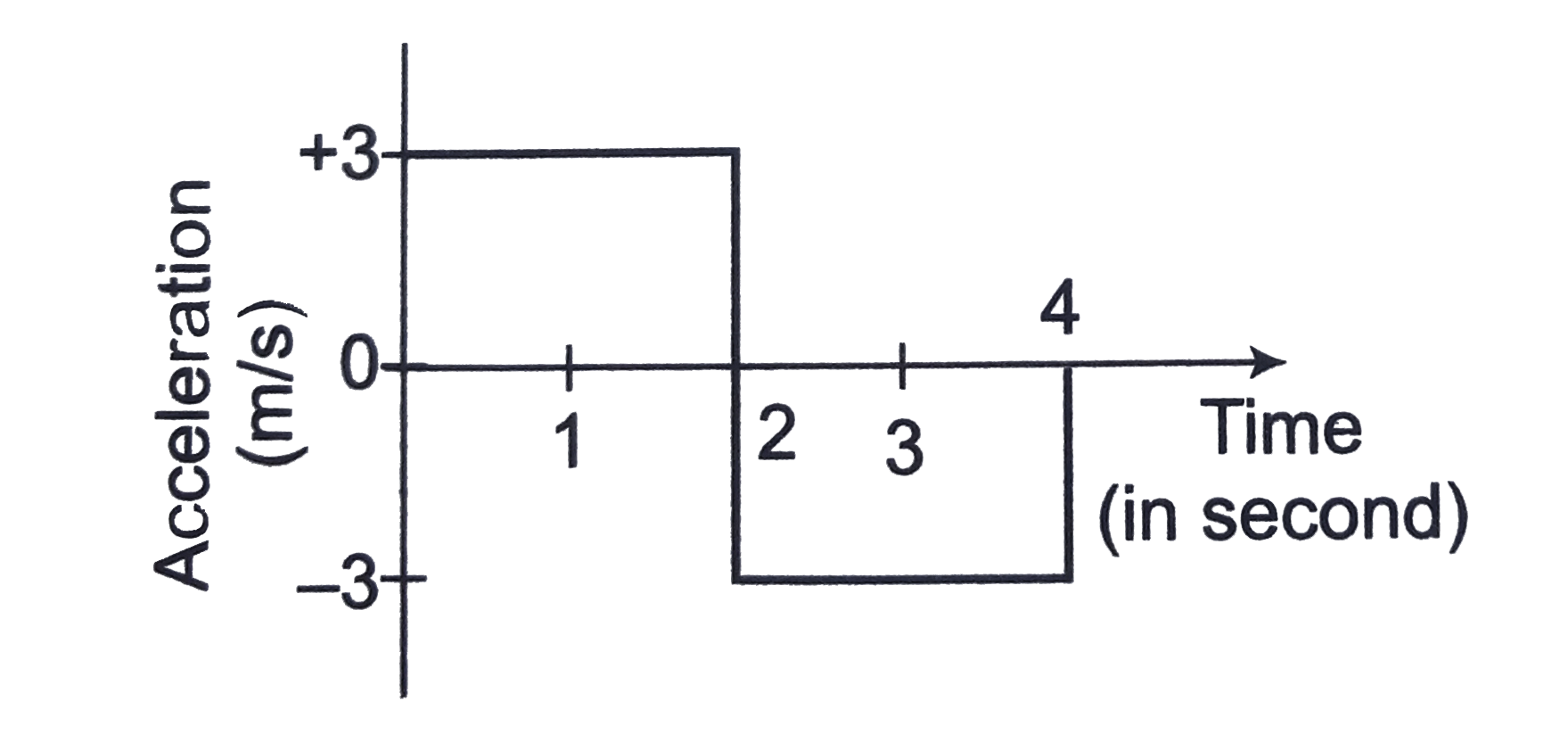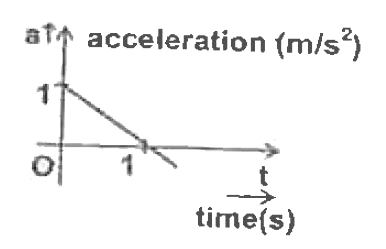A particle starts from point A moves along a straight line path with an acceleration given by a = p - qx where p, q are connected and x is distance from point A . The particle stops at point B. The maximum velocity of the particle is
The correct Answer is:B
To find the maximum velocity of the particle moving from point A to point B with the given acceleration a=p−qx, we can follow these steps:
Step 1: Understand the relationship between acceleration and maximum velocity
The particle will reach its maximum velocity when the acceleration becomes zero. Therefore, we set the acceleration equation to zero:
0=p−qx
Step 2: Solve for x
From the equation 0=p−qx, we can rearrange it to find x:
qx=p⟹x=pq
Step 3: Express acceleration in terms of velocity
We know that acceleration a can also be expressed in terms of velocity v and position x:
a=vdvdx
Step 4: Substitute the expression for acceleration
Now we can substitute the expression for acceleration into our equation:
vdvdx=p−qx
Step 5: Rearrange and integrate
Rearranging gives us:
vdv=(p−qx)dx
Now, we can integrate both sides. The left side integrates to:
∫vdv=v22
The right side integrates as follows:
∫(p−qx)dx=px−qx22
Step 6: Combine results from integration
Combining the results from both sides, we have:
v22=px−qx22
Step 7: Solve for v2
Multiplying through by 2 gives:
v2=2px−qx2
Step 8: Substitute x=pq
Now, we substitute x=pq into the equation for v2:
v2=2p(pq)−q(pq)2
This simplifies to:
v2=2p2q−qp2q2
Step 9: Simplify the expression
Combining the terms gives us:
v2=2p2q−p2q=p2q
Step 10: Find v
Taking the square root gives us the maximum velocity:
v=√p2q=p√q
Conclusion
Thus, the maximum velocity of the particle is:
p√q
The particle will reach its maximum velocity when the acceleration becomes zero. Therefore, we set the acceleration equation to zero:
From the equation 0=p−qx, we can rearrange it to find x:
We know that acceleration a can also be expressed in terms of velocity v and position x:
Now we can substitute the expression for acceleration into our equation:
Rearranging gives us:
Combining the results from both sides, we have:
Multiplying through by 2 gives:
Now, we substitute x=pq into the equation for v2:
Combining the terms gives us:
Taking the square root gives us the maximum velocity:
Thus, the maximum velocity of the particle is:
Topper's Solved these Questions
- MOTION IN A STRAIGHT LINEBook:NCERT FINGERTPS ENGLISHChapter:MOTION IN A STRAIGHT LINEExercise:KINEMATIC EQUATIONS FOR UNIFORMLY ACCELERATED MOTION
Explore 32 Videos
- MOTION IN A STRAIGHT LINEBook:NCERT FINGERTPS ENGLISHChapter:MOTION IN A STRAIGHT LINEExercise:RELATIVE VELOCITY
Explore 18 Videos
- MOTION IN A STRAIGHT LINEBook:NCERT FINGERTPS ENGLISHChapter:MOTION IN A STRAIGHT LINEExercise:INSTANTANEOUS VELOCITY AND SPEED
Explore 16 Videos
- MOTION IN A PLANE Book:NCERT FINGERTPS ENGLISHChapter:MOTION IN A PLANE Exercise:Assertion And Reason
Explore 15 Videos
- OSCILLATIONS Book:NCERT FINGERTPS ENGLISHChapter:OSCILLATIONS Exercise:Assertion And Reason
Explore 15 Videos
Similar Questions
A particle starts from point A, moves along a straight line path with an accleration given by a=2(4−x) where x is distance from point A. The particle stops at point B for a moment. Find the distance AB (in m). (All values are in S.I. units)
View SolutionA particle starts from rest at t=0 and moves in a straight line with an acceleration as shown below. The velocity of the particle at t=3 s is

View SolutionA particle starts from origin and moves on a straight line path with an acceleration proportional to square of its displacement.Kinetic energy during displacement x will be
View SolutionA particle starting from rest moves along a straight line with constant acceleration for this velocity displacement graph will have the form-
View SolutionA particle starts moving in a straight line from rest with an acceleration (inm/s2) given by : a=12√x, where x is the distance travelled by the particle (in meters ) The velocity of the particle at the instant when its acceleration is 48m/s2 is .......m/s
View SolutionA particle starts from rest at time t=0 and moves on a straight line with acceleration as plotted in fig. The speed of the particle will be maximum after time.

View SolutionA particle is moving with a constant speed along a straight line path. A force is not required to
View SolutionA particle starts from rest and moves with constant acceleration. Then velocity displacement curve is:
View SolutionA particle moving along a straight line with uniform acceleration has velocities 7m/s at A and 17m/s at C. B is the mid point of AC. Then :-
View SolutionA particle starting from rest moves in a straight line with acceleration as shown in the a-t graph. Find the distance (in m) travelled by the particle in the first four seconds from start of its motion.
Q
View Solution
